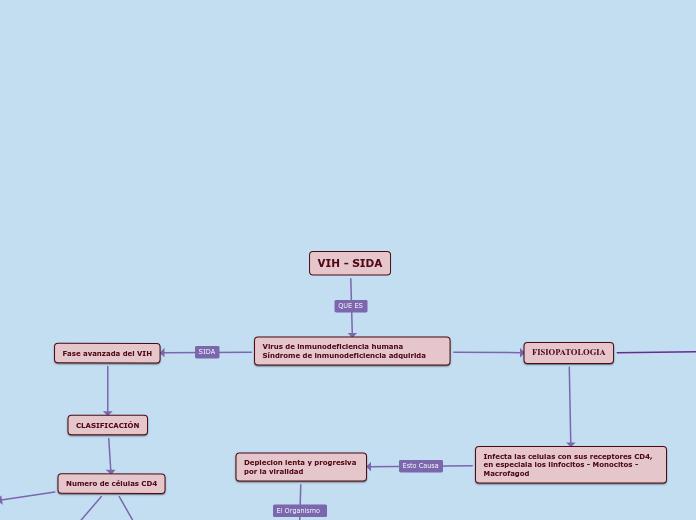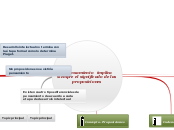SEMIOLOGIA PSIQUIATRICA
Type in the name of the book you have read.
Topic principal
ESFERA O FUNCIONES COGNOSCITIVAS
son aquéllas que hacen que el ser humano pueda conocer los fenómenos que suceden a su alrededor
PENSAMIENTO
TRASTORNOS DEL PENSAMIENTO
Alteración según el contenido
Tipos
De nihilismo o nihilistas
De autoreproche
De Referencia
De grandeza
De influencia
De persecucion
IDe daño o perjuicio
Idea Delirante
caracteristicas
Irreductible
Morbosa
Ilogica
Irreal
Idea Obsesiva
Idea Fobica
Idea Fija
Idea Sobrevalorada
Alteraciones según el curso
Incoherencia
Interrupcion del pensamiento
Perseveracion
Prolijidad
Fuga de Ideas
Aceleracion del pensamiento
Lentificación del pensamiento
Alteraciones según el origen
Pensamiento Autista
Irreal o ilógico.
Real o lógico
se produce en el cerebro humano al relacionar los objetos del mundo real, entre sí.
PERCEPCIONES
TRASTORNO DE L PERCEPCION
TRANSFORMACIÓN
METAMORFOSIS
DESPERSONALIZACIÓN
DESREALIZACIÓN
PSEUDOALUCINACIONES
ALUCINACIONES
ILUSIONES
Imagen psíquica que el sujeto se forma del objeto real
SENSACIONES
TRANTORNO DE LAS SENSASIONES
CENESTOPATÍAS
PARESTESIA
ANESTESIAS
HIPOESTESIAS
HIPERESTESIAS
Estímulos que sentimos a través de los sentidos
Esfera o Funciones de Integracion o de sintesis
Type the main events of the book, classifying them in: events from the beginning, events from the middle, and events from the end of the book.
Describe the story visually. Add a representative picture for each of them.
ORIENTACION
TRASTORNOS DE LA ORIENTACION
Desorientación en Persona
Desorientacion en espacio
Desorientacion en tiempo
Facultad que tiene el ser humano para ubicarse en tiempo, espacio, persona.
MEMORIA
TRANTORNOS DE LA MEMORIA
Paramnesia
Hipermnesia
Amnesia
Hipomnesia
Memoria de evocación o Retrograda
Memoria de Fijación o Anterograda
ATENCION
TRANSTORNO DE LA ATENCION PASIVA
Hipervigilancia
TRANSTORNO DE LA ATENCION ACTIVA
Hiperconcentracion
Distractibilidad
CONCIENCIA
Alteracion del nivel de conciencia (Desorientado)
Type the main events from the middle.
Add a representative picture for each of them.
Coma
ataque convulsivo
Estado Confunsional
Estado Crepusculr
Delirio Agudo
Estado Oniroide
obnubilación
DIAGNOSTICO NOSOLOGICO
Otros medios paraclinico
Electromiografias
Electrocardiograma
Rayos X
Eamenes de laboratorio
Union de varios sindromes
para poder llegar al Dx se explora
Llega al diagnostico de una enfermedad
agrupación en síndromes
todos los signos al reconocimiento del paciente
Todos los sintomas en el interrogatorio
SINDROME
Type the names of the book characters. Start with the main character.
Draw arrows to represent the relationship between them and if it is possible write on them what they represent for each other (if they are relatives, friends, lovers, enemies etc.)
agrupación se signos y síntomasque se relacionan
Insomnio
Inapetencia
desmotivación
tristeza
llanto espontaneo
What are the characteristics that best describe the character? Type them here.
SIGNOS
Alteracion que se puede observar
paciente intranquilo
paciente inquieto
SINTOMAS
What is the reason why the author wrote the book?
Subjetivo
Tengo presión en el pecho, no se puede comprobar
No es posible comprobar si el mismo es real o no
OBJETIVOS
Las manos me sudan y se percibe el examen
Refiere al paciente y se constata por el personal de sistencia
Manifestacion por el paciente que traduce en malestar en su oganismo
DEFINICION
Who is the author of the book? Type in his/her name.
Estudia los síntomas y signos que permite llegar a un diagnostico correcto









